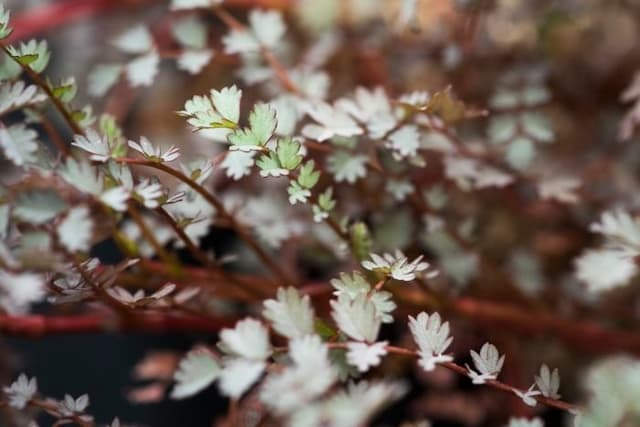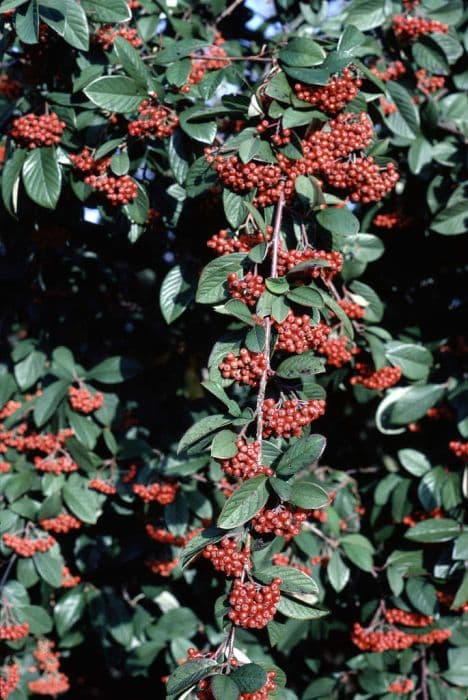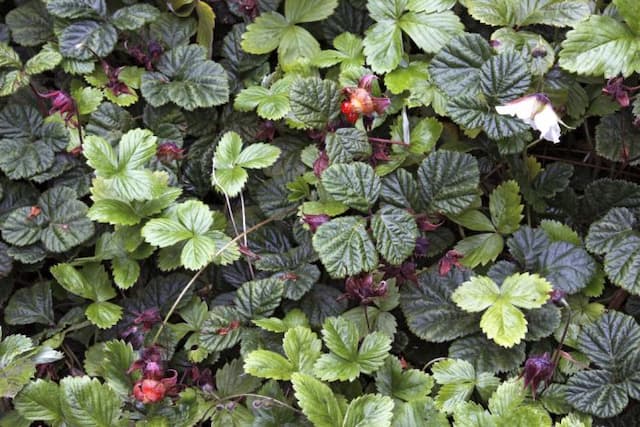Cherry laurel Prunus laurocerasus



ABOUT
Prunus laurocerasus, commonly known as Cherry laurel or English laurel, is an evergreen shrub or small tree that can grow up to 40 feet tall. The leaves are glossy and dark green, alternate and simple, elliptical to oval in shape, with a finely toothed margin, and a length of 2-4 inches. The leaves are leathery in texture.
The tree produces small, white, fragrant flowers in clusters, which appear in late spring to early summer. The flowers are followed by small, black berries that mature in the fall. The tree has a dense, bushy growth habit and is often used as a hedge or screen plant.
The bark is smooth and gray in color, and the tree has a pyramid shape. The cherry laurel is tolerant to a wide range of soil conditions, but prefers well-drained, moist soil and partial to full sun. It is a hardy plant and can be grown in different climates. It is a popular ornamental tree in gardens and parks for its evergreen foliage and fragrant flowers.
About this plant
 Names
NamesFamily
Rosaceae
Synonyms
Cherry laurel, Common laurel, English laurel, Laurel cherry, Versailles laurel, Mountain laurel, Spoonwood, Mountain ivy, Calico bush, Ivy bush
Common names
Cerasus laurocerasus, Kalmia latifolia
 Toxicity
ToxicityTo humans
Prunus laurocerasus contains a toxic compound called prunasin, which can be harmful to humans if ingested in large quantities. Prunasin can cause symptoms such as nausea, vomiting, stomach pain, and breathing difficulties if ingested.
Ingesting large amounts of the leaves or the bark can cause more severe symptoms such as tremors, seizures, and even death in rare cases. Contact with the skin can cause irritation.
It is best to keep cherry laurel out of reach of children and to wear gloves when handling the plant. If you suspect that someone has ingested any parts of the cherry laurel, seek medical attention immediately.To pets
Prunus laurocerasus contains a toxic compound called prunasin, which can be harmful to animals if ingested in large quantities. Prunasin can cause symptoms such as nausea, vomiting, stomach pain, and breathing difficulties if ingested.
Ingesting large amounts of the leaves or the bark can cause more severe symptoms such as tremors, seizures, and even death in rare cases. Contact with the skin can cause irritation.
It is best to keep cherry laurel out of reach of animals and to wear gloves when handling the plant. If you suspect that an animal has ingested any parts of the cherry laurel, seek veterinary attention immediately.
 Characteristics
CharacteristicsLife cycle
Perennials
Foliage type
Evergreen
Color of leaves
Green
Flower color
White
Height
Up to 40 feet
Spread
Up to 40 feet
Plant type
Shrub
Hardiness zones
5
Native area
Southwestern Asia, Southeastern Europe
Benefits
 General Benefits
General BenefitsThe plant is often used as a hedge or screen plant due to its dense, bushy growth habit, and evergreen foliage. It is an ideal choice for creating privacy screens or property boundaries;
The glossy, dark green leaves of the cherry laurel provide a lush, tropical feel to gardens and landscapes. The fragrant white flowers that appear in the spring and early summer, add an additional touch of beauty to the plant;
The cherry laurel is an excellent plant for controlling erosion on sloping or hilly landscapes. Its deep roots help to hold soil in place and prevent erosion;
The cherry laurel provides a food source and shelter for wildlife, particularly birds. The black berries produced by the tree are a favorite food for birds, and the dense foliage provides cover for nesting and roosting;
The cherry laurel is tolerant to a wide range of soil conditions, and can be grown in different climates. The plant is also tolerant of urban conditions such as pollution and salt spray, making it a good choice for planting near roads or in coastal areas;
The cherry laurel is a low maintenance plant, it does not require regular pruning, and is drought tolerant once established. Medical Properties
Medical PropertiesCherry laurel has been traditionally used in herbal medicine for various purposes, but it should be noted that there is limited scientific evidence to support many of these uses:
The plant's leaves have been used to make a tea that is believed to help relieve symptoms of respiratory issues such as cough, asthma and bronchitis;
The plant's leaves have been used to make an infusion that is believed to have a mild laxative effect and to relieve symptoms of indigestion and stomach pain.
It is important to note that the leaves and bark of the cherry laurel contain a toxic compound called prunasin and should not be consumed in large amounts or without proper medical supervision. Air-purifying Qualities
Air-purifying QualitiesCherry laurel has been shown to have some air purifying qualities. It has been found to be effective in removing certain pollutants from the air, such as formaldehyde and xylene.
 Other Uses
Other UsesThe wood of the cherry laurel can be used for small decorative items such as carvings and small furniture, also the leaves can be dried and used for wreaths, garlands and dried flower arrangements.
Interesting Facts
 Feng Shui
Feng ShuiIn feng shui, the cherry laurel is associated with the wood element and is believed to bring growth, abundance, and prosperity to a space.
It is said to be particularly beneficial in the east and southeast areas of a home or office, which are associated with the wood element and the family and wealth areas respectively. Zodiac Sign Compitability
Zodiac Sign CompitabilityIn astrology, there is no direct correlation between the Prunus laurocerasus plant and zodiac sign compatibility.
 Plant Symbolism
Plant SymbolismThe cherry laurel is a symbol of victory, success and triumph, it is also associated with the goddess Athena, the goddess of wisdom, courage, inspiration, civilization, law and justice, strategic warfare, mathematics, strength, strategy, the arts, crafts and skill;
It is also said to be a symbol of protection and a symbol of peace.
 Water
WaterCherry laurel is relatively drought-tolerant once established, but regular watering during the first growing season is important for proper establishment.
The plant prefers well-drained, moist soil, and should be watered deeply once or twice a week during dry spells. It's important to avoid over-watering the plant, as it can lead to root rot.
A good way to check if the plant needs watering is to stick your finger into the soil, if the top inch of soil is dry, it's time to water. Light
LightThe Cherry laurel prefers partial to full sun, but it can also tolerate some shade.
It is important to note that the plant may not flower or fruit as well in low light conditions. Temperature
TemperatureThe Cherry laurel is hardy and can survive in a wide range of temperatures.
It can tolerate temperatures as low as -4°F and as high as 90°F, making it a good choice for planting in different climates. However, it should be protected from cold, drying winds, which can damage the foliage. Pruning
PruningPruning is not necessary for the cherry laurel, but it can be done if desired to shape the plant, remove dead or damaged branches, or to control its size. The best time to prune is during the dormant season (late fall to early spring) before new growth begins. It's important to use sharp, clean tools and to make cuts just above a bud or a side branch.
 Cleaning
CleaningAs needed
 Soil
SoilCherry laurel prefers well-drained, moist soil with a neutral pH between 6.0 and 7.0.
It is tolerant of a wide range of soil types, but it prefers soil that is rich in organic matter. The plant can tolerate a range of soil pH, but it prefers a neutral soil pH.
If the soil is too acidic or too alkaline, it can affect the plant's ability to absorb essential nutrients and may cause nutrient deficiencies. Repotting
RepottingThe cherry laurel does not require frequent repotting.
The plant can be planted in the ground or in a container, and it is best to plant it in a container that is slightly larger than the root ball. It's important to ensure that the container has good drainage, and that the plant is planted at the same level it was in the previous container.
The plant can be repotted every 3-5 years or as needed. Humidity & Misting
Humidity & MistingCherry laurel is tolerant of a wide range of humidity levels, but it prefers moderate humidity.
The plant can tolerate dry conditions, but high humidity can lead to the development of fungal diseases. It's important to keep the humidity level moderate by providing good air circulation and avoiding overcrowding plants. Suitable locations
Suitable locationsIndoor
Cherry laurel is primarily an outdoor plant.
But the Cherry laurel can be grown indoors as a houseplant, but it can grow quite large, so it's important to choose a container that is large enough to accommodate the plant's growth.
The plant prefers bright, indirect light, so it should be placed near a window that receives plenty of sunlight. The plant prefers moderate humidity and well-draining soil. Keep the soil consistently moist but not waterlogged. Avoid placing the plant near drafts or in a room with extreme temperature fluctuations. Prune the plant as needed to control its size. Keep an eye out for pests and diseases, and treat them promptly if found.Outdoor
The Cherry laurel can be grown outdoors in a wide range of climates.
Plant the Cherry laurel in a location that receives partial to full sun and in well-drained soil. Water the plant regularly during the first growing season to help establish its root system. Once established, the plant is relatively drought-tolerant. Prune the plant as needed to control its size or shape. Keep an eye out for pests and diseases, and treat them promptly if found. Provide winter protection from cold, drying winds if needed.Hardiness zone
USDA 6 - 11
 Life cycle
Life cycleThe Cherry laurel produces seeds that can germinate in early spring, or it can be propagated through semi-hardwood cuttings taken in the summer.
Once established, the cherry laurel will grow rapidly, producing new leaves and branches each year. It can reach a height of up to 40 feet, although it is usually smaller when grown in gardens.
The cherry laurel produces small, white flowers that are followed by black berries. The flowers appear in early spring, before the leaves emerge.
After the flowers have been pollinated, the plant produces small black berries that ripen in the summer or fall. The berries are not typically used for food, but they can be used to propagate the plant.
The cherry laurel is an evergreen plant, so it does not have a dormant period. However, it can lose some of its leaves in cold winter weather, but it will produce new leaves in the spring.
With age, the cherry laurel will slowly lose its vigor, producing fewer flowers and berries, and the branches may become less dense. Eventually, the plant will die, and new plants will need to be planted to replace it. Propogation
PropogationPropogation time
Spring - summer
By SEEDS:
The Cherry laurel produces seeds that can be collected and sown in the spring or fall. The seeds can be sown in seed trays filled with seed compost and kept at room temperature. Once germinated, the seedlings can be transplanted into individual pots and grown on until large enough to plant out.
By SEMI-HARDWOOD CUTTINGS:
Cuttings can be taken from the current year's growth in the summer. They should be about 4-6 inches long and have at least 3-4 leaves. Remove the leaves from the bottom half of the cutting and insert them into a propagating tray filled with cutting compost, and keep them in a bright, warm place but out of direct sunlight. Rooting hormone can be used to encourage roots to form.
By LAYERING:
Layering is a method of propagation that involves bending a low-growing branch to the ground, making a small incision in the bark, and covering it with soil. Once the branch has rooted, it can be severed from the parent plant and grown on as a separate plant.
By GRAFTING:
Grafting is a method of propagation that involves attaching a cutting from one plant (the scion) to a rootstock of another plant. This method is used to propagate cherry laurel cultivars that are difficult to propagate by other means.
 Pests
PestsSpider mite, Scale insects, Aphid
 Diseases
DiseasesRoot Rot, Powdery mildew, Leaf spot




![Indian hawthorn [Enchantress]](/_next/image?url=https%3A%2F%2Fplants-admin.emdemapps.com%2Fimages%2Fplants%2F%2Fimages%2F604b5eefbd4f1.png&w=640&q=75)




